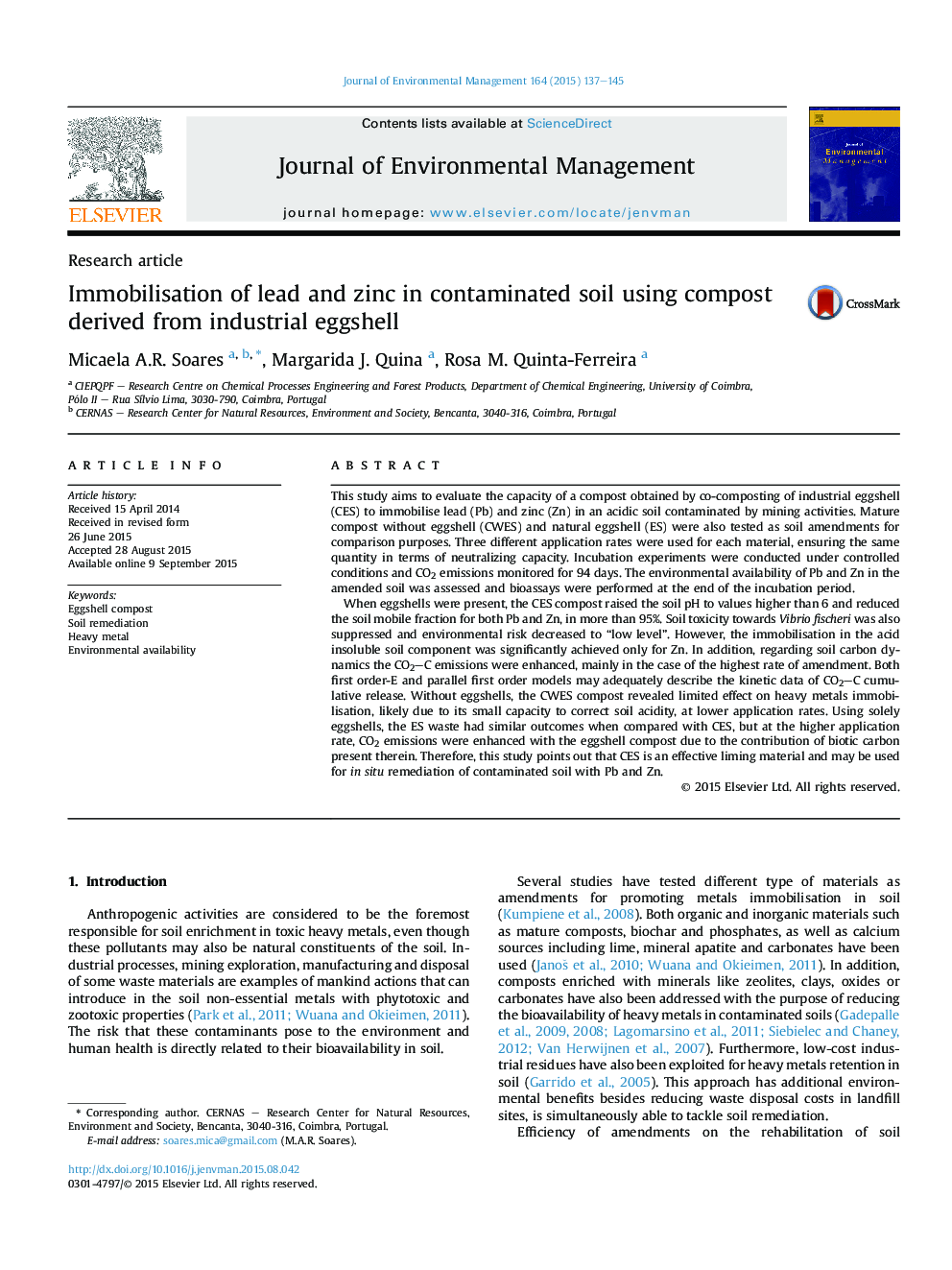| Article ID | Journal | Published Year | Pages | File Type |
|---|---|---|---|---|
| 1055417 | Journal of Environmental Management | 2015 | 9 Pages |
•Eggshell compost (CES) was studied for the immobilisation of heavy metals in soil.•CES mitigates the environmental risk posed by heavy metals in soil.•Both CES and natural eggshell were able to correct soil acidity.•Retention capacity of Pb and Zn in soil was similar for natural eggshell and CES.
This study aims to evaluate the capacity of a compost obtained by co-composting of industrial eggshell (CES) to immobilise lead (Pb) and zinc (Zn) in an acidic soil contaminated by mining activities. Mature compost without eggshell (CWES) and natural eggshell (ES) were also tested as soil amendments for comparison purposes. Three different application rates were used for each material, ensuring the same quantity in terms of neutralizing capacity. Incubation experiments were conducted under controlled conditions and CO2 emissions monitored for 94 days. The environmental availability of Pb and Zn in the amended soil was assessed and bioassays were performed at the end of the incubation period.When eggshells were present, the CES compost raised the soil pH to values higher than 6 and reduced the soil mobile fraction for both Pb and Zn, in more than 95%. Soil toxicity towards Vibrio fischeri was also suppressed and environmental risk decreased to “low level”. However, the immobilisation in the acid insoluble soil component was significantly achieved only for Zn. In addition, regarding soil carbon dynamics the CO2–C emissions were enhanced, mainly in the case of the highest rate of amendment. Both first order-E and parallel first order models may adequately describe the kinetic data of CO2–C cumulative release. Without eggshells, the CWES compost revealed limited effect on heavy metals immobilisation, likely due to its small capacity to correct soil acidity, at lower application rates. Using solely eggshells, the ES waste had similar outcomes when compared with CES, but at the higher application rate, CO2 emissions were enhanced with the eggshell compost due to the contribution of biotic carbon present therein. Therefore, this study points out that CES is an effective liming material and may be used for in situ remediation of contaminated soil with Pb and Zn.
